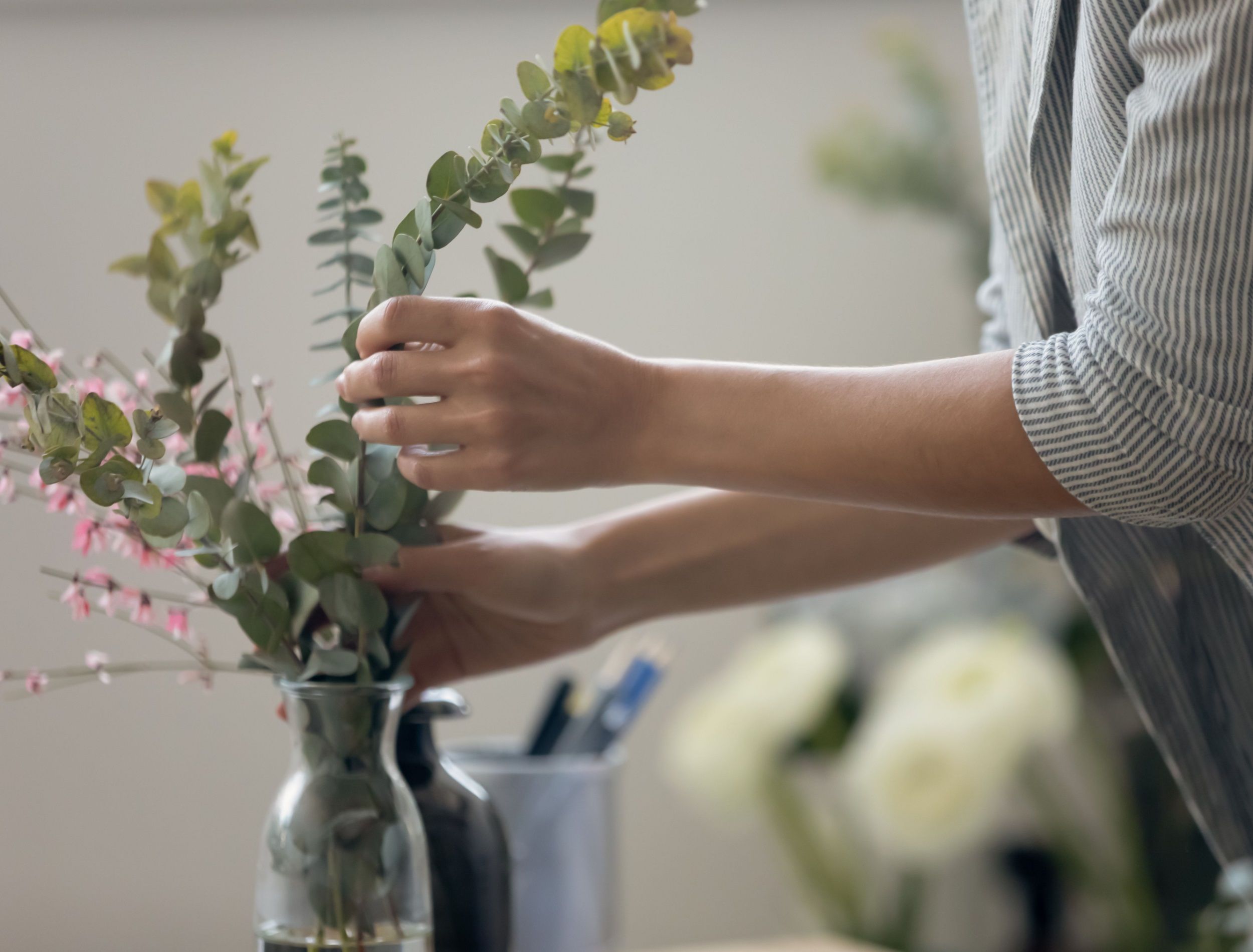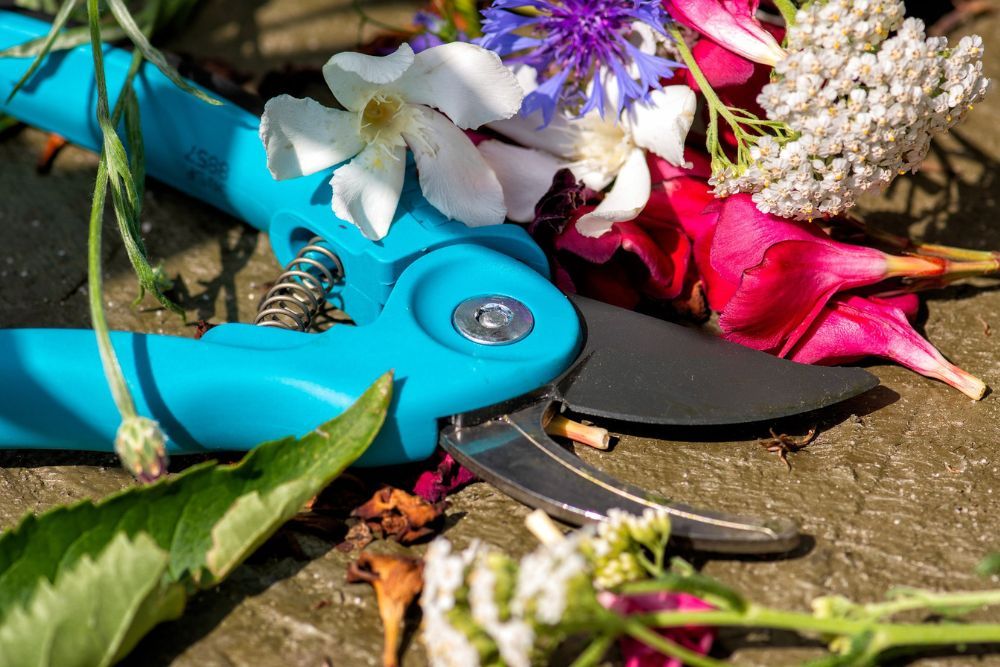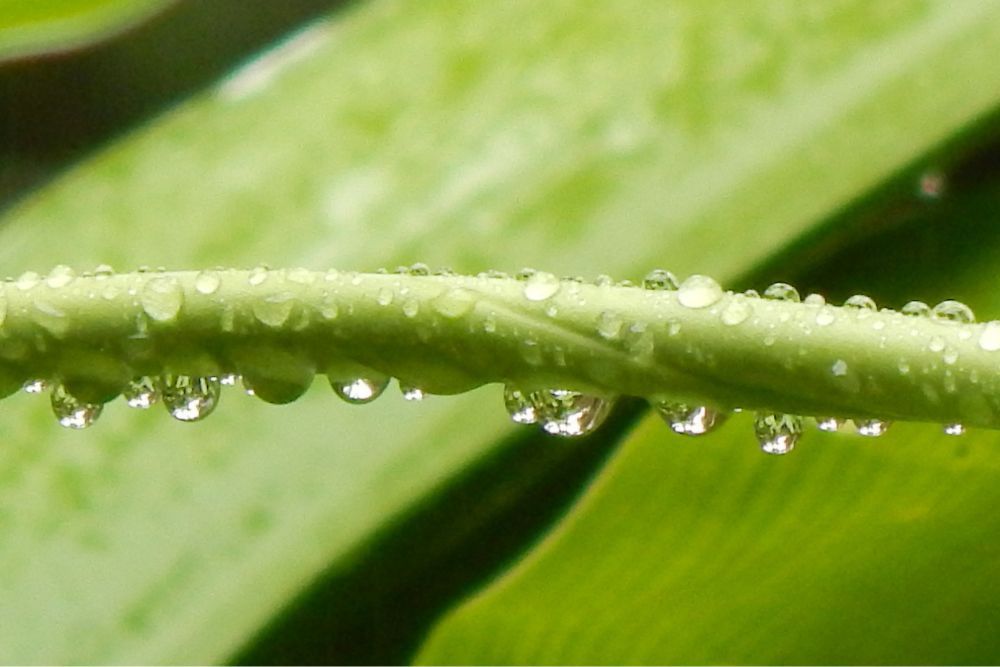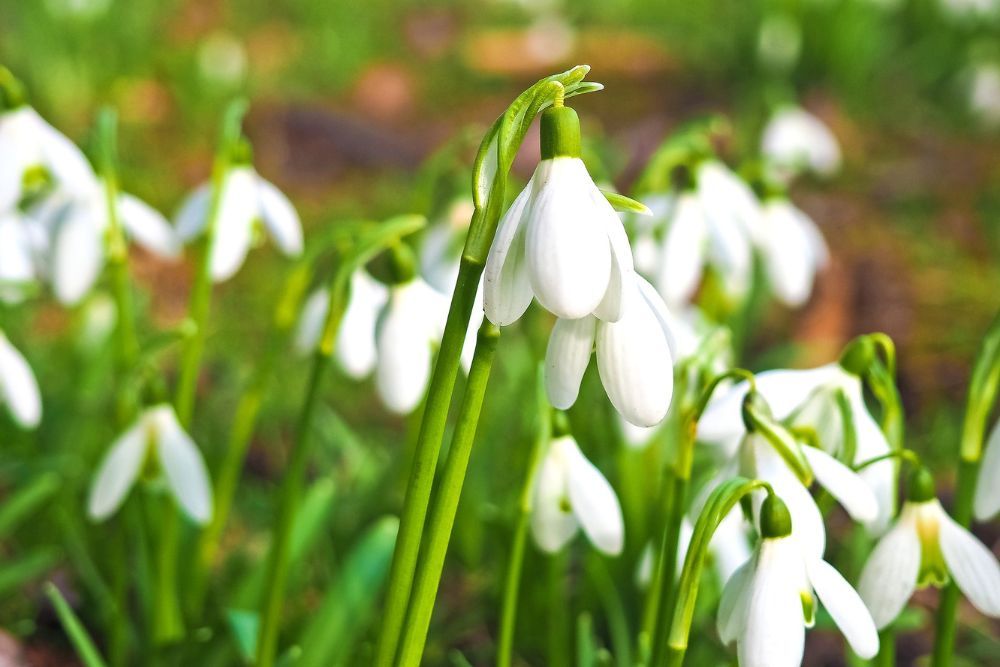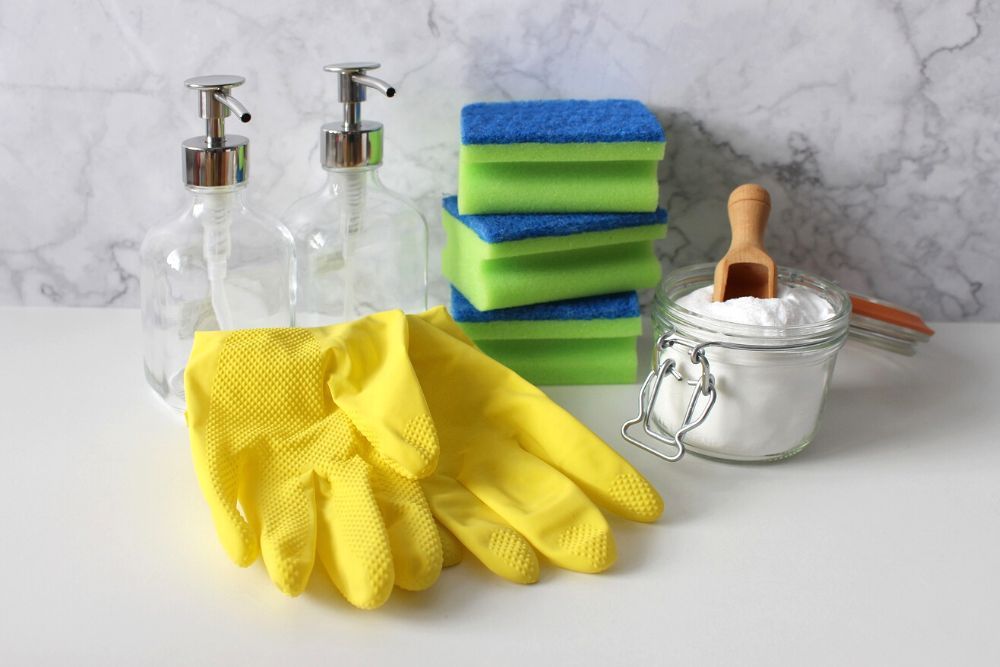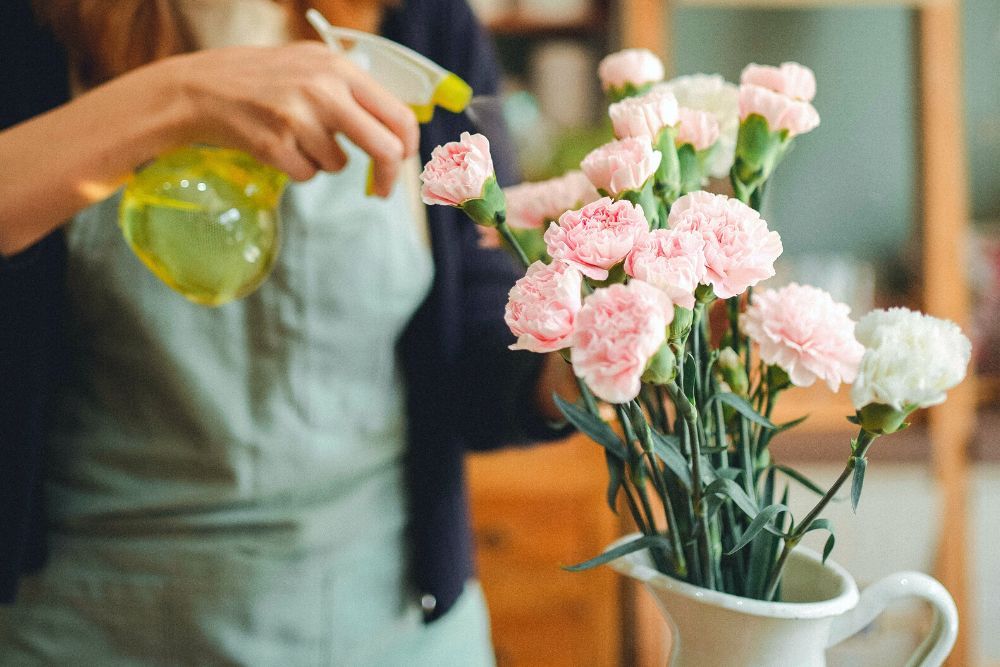Cutting the flowers from your own garden is a satisfying way to bring the vibrant colors and refreshing scents from the outdoors into your home. Ensuring your flowers are taken care of properly after they’ve been cut is crucial to keep them looking lively.
Typically, flowers will last about one week in a vase full of fresh water, but with some extra care you can extend this by several days. Here are six easy ways to make your cut flowers last longer, starting from the first snip!
1. Use Proper Cutting Tools
Image credits: Willfried Wende via Pixabay
Cutting your garden flowers is a perfect opportunity to pull out those shiny new garden shears! Freshly sharpened and cleaned knives and clippers will also do the trick, but be sure not to use regular scissors.
Scissors are household tools designed to cut paper, fabric, and thin materials. Plant stems are thicker and by using scissors to cut them, you risk damaging the plants delicate interior.
An aggressive cut made by scissors can destroy the vascular system within the stem. If this happens, your flowers won’t be able to absorb water efficiently, inevitably leading to a shorter lifespan.
2. Cutting Tips and Techniques
Image credits: Alejandra Acosta Brncich via Pixabay
Once a flower is cut, it will become highly sensitive to moisture changes. This is primarily because they no longer have a root system to constantly regulate their water and nutrient uptake. As a result, flowers have the ability to turn on a natural defense system within the first few minutes of being exposed to oxygen after a fresh cut.
This automatic reaction includes sealing up its vascular system to protect any water stored within its stem. This process however, can end up halting the flower’s capability to absorb water.
To prevent this from happening, it’s useful to cut the stems underwater. This will help keep air out of the major transport pathway within a plant’s stem, so it won’t be able to close up. This way you can make a clean cut and quickly transfer your flowers to a vase full of fresh water.
Pro Tip: The technique you use to cut your flower stem can also have an impact on its longevity. Aim to cut your flower stem at a 45 degree angle! This will offer a wider area that will be exposed to water, for stronger and more efficient uptake as your flower lives in its vase.
3. Stem Specifics
Image credits: MIchael Gaida via Pixabay
Depending on the type of flower stem you’re working with, there are some specific steps you can take to further prepare your flowers for life in a vase. Below are some things to keep in mind for each type of stem.
Hearty stems
For flowers such as marigolds and daisies, make sure to keep them in lukewarm water for at least an hour after cutting. They need a long drink before being arranged with other flowers, if you’re putting them into a bouquet. It’s also a good idea to feed them a preservative (see step 6).
Hollow stems
For flowers like dahlias and delphiniums, their long and hollow stems need to stay filled with water. You can flip the flower upside down, fill up the stem, and plug it with some cotton. Otherwise, once filled with water, cover the stem opening with your thumb and submerge it right away to keep the water trapped inside.
Soft stems
Tulips and irises are examples of flowers with soft stems and all they need is cold water to mimic the cooler outdoor temperatures they love.
Woody stems
For plants such as dogwood and purple lilacs, gently split the stems. This will open up more surface area so they can absorb water with more ease.
Milky Stems
Flowers like euphorbia and lobelia contain a sap in their stems that clogs their ability to absorb water once cut. For this reason, their ends will need to be seared. You can do this either by dipping the open stem into boiling water for 30 seconds or applying a flame to their cut end for 30 seconds.
4. Prevent Cross-Contamination
Image credits: Monfocus via Pixabay
Apart from lacking proper hydration, bacteria is the second largest culprit that can cut the life of your flowers short. There are a few things you can do to protect your flowers from any pathogens lurking nearby.
First, before you put your flowers in water make sure to snip away any leaves that will be sitting lower than the waterline. Leaves that are submerged will easily rot, causing mold and bacteria to quickly spread to the rest of the plant.
Next, make sure the vase you’ll be putting your flowers in is washed and rinsed thoroughly. Many types of commercial dish soap can leave residue behind. This can interfere with the pH balance of water and lead to bacterial overgrowth. To help prevent this, it’s a good idea to wash your vase with lemon juice, baking soda, and vinegar.
5. Proper Hydration
Image credits: Kim van Vuuren via Pexels
Fresh and clean water is essential for keeping your flowers alive. Most flowers will prefer lukewarm water (98 to 110 degrees Fahrenheit), as the molecules move faster in it than cold. This means they’ll be able to absorb the water and any nutrients in it much quicker.
However, this is not the case for every flower. Flowers that grow from bulbs, such as tulips and hyacinths, prefer cold water. This is because they are used to cooler outdoor air and ground temperatures. Be mindful of this when you’re giving your bulb flowers a drink.
Keep an eye on the water quality in your vase daily. It should be changed every three days or as soon as you notice a difference in clarity or color. If the water is murky or yellowing, it’s a good idea to move your flowers to a fresh vase altogether to prevent the spread of any bacteria.
It’s also important to make sure you don’t put your flowers anywhere in your home that may get too hot, such as a sunny windowsill or near kitchen appliances like stovetops. These spots will drain much needed moisture from your flowers!
6. Feed Your Flowers
Image credits: Amina Filkins via Pexels
Just like any living organism, flowers also need food. Though there are many commercial flower supplements available, you can easily make your own flower food at home. Here’s what you’ll need:
- ½ ounce vinegar, apple cider vinegar, or lemon juice: Lowers the pH to help improve water uptake by the flower stems. Apple cider vinegar is also an antimicrobial.
- ½ ounce sugar: A source of essential carbohydrates to nourish your flowers.
- ½ ounce bleach: A disinfectant that protects against bacterial growth and mold.
- 1 quart lukewarm water
Just give this combination a good mix and it will be ready to feed to your flowers!
Enjoy the Freshness
Decorating your home with assorted flowers from your own garden is a beautiful and rewarding experience. With proper care after they are removed from the garden, you’ll easily be able to help your cut flowers last longer. These six steps will keep your flowers looking fresh and smelling sweet for days to come!
What are some of your favorite flowers to combine into a bouquet for your home? Share your ideas below to help spread some inspiration!

